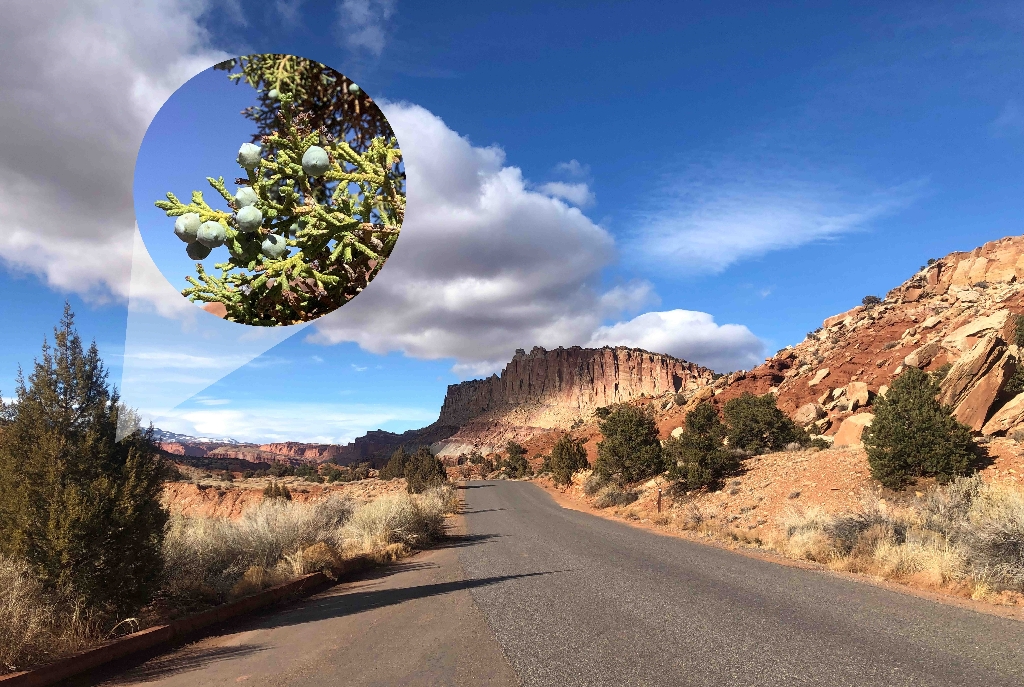
To the west, the landscape is dotted with small trees. Junipers and pinyon pines live side by side in the most common plant community on the Colorado Plateau: the pinyon-juniper woodland. Junipers have overlapping scale-like leaves and light blue berries, which are actually tiny cones covered in a waxy coating. Every juniper is unique. Some are bushy, others appear to be half dead with bare twisting branches. To conserve water, the tree self-prunes, cutting off nutrients to some branches to ensure the survival of the tree. How do they obtain enough water in this very dry desert? An immense root system can account for two thirds of a tree’s mass. The main taproot can extend up to 25 feet underground and lateral roots may stretch up to 100 feet from the trunk. With the help of these adaptations, a juniper can live to be 700 years old, providing delectable berries to generations of rabbits, coyotes, and birds over its lifespan.
Is there something we missed for this itinerary?
Itineraries across USA

Acadia

Arches National Park

Badlands

Big Bend

Biscayne

Black Canyon Of The Gunnison

Bryce Canyon

Canyonlands

Capitol Reef

Carlsbad Caverns

Channel Islands

Congaree

Crater Lake

Cuyahoga Valley

Death Valley

Dry Tortugas

Everglades

Gateway Arch

Glacier

Grand Canyon

Grand Teton

Great Basin

Great Smoky Mountains

Guadalupe Mountains

Haleakalā

Hawaiʻi Volcanoes

Hot Springs

Indiana Dunes

Isle Royale

Joshua Tree

Kenai Fjords

Kobuk Valley

Lassen Volcanic

Mammoth Cave

Mesa Verde

Mount Rainier

North Cascades

Olympic

Petrified Forest

Pinnacles

Rocky Mountain

Saguaro

Shenandoah

Theodore Roosevelt

Virgin Islands

Voyageurs

White Sands

Wind Cave

Yellowstone

Yosemite

Zion